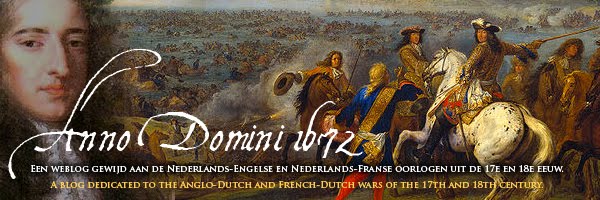
Groeningen, the Capital of the Landscape of Groeningen and the Ommelanden (lit: surrounding land) , lays on the river Schuytendiep, three large miles from Delfs-Ziel, and six from Leeuwaerden, it is a well inhabited Town, with rich houses and beautiful manors, who thrive in trade, and have great freedom from their Rulers, doing Civil and criminal justice, without any preceding permissions. In the year 1580, the Count of Rennebergh, secured the town for the King of Spain; though it came into possession of the United Provinces by Prince Maurice; they enlarged the city in the year 1614, and with 17 bulwarks and deep moats it was strengthened. In the year 1672 it was besieged by the Bishops of Kur Cologne and - Munster on the 9. of Juli, but they had to leave the town, which was destroyed for a third by hot bullets or otherwise, the 17th of August of the same year.




Wat, geen nederlands, hoe kunnen wij lernen?
BeantwoordenVerwijderenDo people still dig up artifacts there, I wonder?
Herr Mekelnborg!
BeantwoordenVerwijderenThe dutch text is on the lower left side of the plate and the french on the right side. My translation is a bit literal, in the hope that students of our language may be helped by this.
In 1674 the view would be a bit different: the trenches and graves would be visible, just like the first garden houses and public houses. Before august 1672 the countryside was extensively used as garden and farmland, but when the Enemy approached the houses and small woods were torn down. I still have to make a translation of an excellent article by mr Perton on that matter.
And yes, people still find things. The 'approaches' to the wall now ly in residential parts of the town, and indeed near the 'Oosterpoort' bullets were found.
All the finds in the Province of Groningen are kept in a central depot, that is open to visitors. When the fortress town of Bourtange was reconstructed, the finds were enormeous: the town was besieged in 1666 and 1672 and remained as a garrison for a very long time. I still regret not buying the book on the finds years ago.
So Groningen was still a city from the King of Spain in 1674?
BeantwoordenVerwijderenRegards
No, in 1594 it became one of the Provinces of the United Netherlands after Maurice besieged the town.
BeantwoordenVerwijderenThere has been a lot of local research on Verdugo, the last Spanish Stadholder, who fought the war against Maurice and William Louis. His war diary has been translated in dutch a year ago, with a lot of historical comments and notes with it.